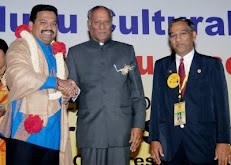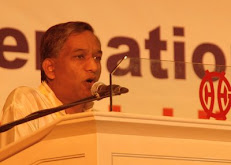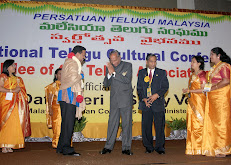Deepavali is popularly known as the festival of lights. It is an important five-day festival in Hinduism and Jainism, occurring between mid-October and mid-November. For Hindus, Diwali is the most important festival of the year and is celebrated with families performing traditional activities together in their homes. Deepavali is an official holiday in India, Guyana, Trinidad & Tobago, Mauritius, Malaysia, Nepal, Singapore, Sri Lanka, Myanmar , Fiji , and Suriname.
It is also known Diwali which is itself a contraction of the word "Deepavali" (Sanskrit: Dīpāvali), which translates into row of lamps. Diwali involves the lighting of small clay lamps (divas) filled with oil to signify the triumph of good over evil. During Diwali celebrants wear new clothes and share sweets and snacks with family members and friends. Some Indian business communities begin the financial year on the first day of Diwali, hoping for prosperity the following year.
In Jainism, Diwali marks the attainment of moksha by Mahavira in 527 BC. In Sikhism, Deepavali commemorates the return of Guru Har Gobind Ji to Amritsar after freeing 52 Hindu kings imprisoned in Fort Gwalior by Emperor Jahangir; the people lit candles and diyas to celebrate his return. This is the reason Sikhs also refer to Deepavali as Bandi Chhorh Divas, "the day of release of detainees". Deepavali is considered a national festival in India and Nepal.
Spiritual Significance
While Deepavali is popularly known as the "festival of lights", the most significant spiritual meaning is "the awareness of the inner light". Central to Hindu philosophy is the assertion that there is something beyond the physical body and mind which is pure, infinite, and eternal, called the Atman. Just as we celebrate the birth of our physical being, Diwali is the celebration of this inner light, in particular the knowing of which outshines all darkness (removes all obstacles and dispels all ignorance), awakening the individual to one's true nature, not as the body, but as the unchanging, infinite, immanent and transcendent reality. With the realization of the Atman comes universal compassion, love, and the awareness of the oneness of all things (higher knowledge). This brings Ananda (joy or peace). While the story behind Deepavali and manner of celebration varies from region to region (festive fireworks, worship, lights, sharing of sweets), the essence is the same – to rejoice in the Inner Light (Atman) or the underlying reality of all things (Brahman).
Deepavali is celebrated for five days according to the lunisolar Hindu Calendar. It begins in late Ashvin (between September and October) and ends in early Kartika (between October and November). The first day is Dhan Teras. The last day is Yama Dvitiya, which signifies the second day of the light half of Kartika. Each day of Deepavali marks one celebration of the six principal stories associated with the festival.[6].
Hindus have several significant events associated with Diwali:
- The return of Sri Ram after 14 years of Vanvas (banishment). To welcome his return, candles were lit in rows of 20.
- The killing of Narakasura: Celebrated as Naraka Chaturdashi, one day before Deepavali, it commemorates the killing of the evil demon Narakasura, who wreaked havoc. Krishna's wife Satyabhama killed Narakasura during the Dwapara yuga. In another version of the belief, the demon was killed by Krishna or Krishna provoked his wife Satyabhama to kill Narshna, defeating Indra.
- Govardhan Puja is celebrated the day after Deepavali and is the day Krishna defeated Indra, the deity of thunder and rain. According to the story, Krishna saw preparations for an annual offering to Lord Indra and asked his father Nanda about it. He debated with the villagers about what their 'dharma' truly was. They were farmers, they should do their duty and concentrate on farming and protection of their cattle. He said that all human beings should do their 'karma' to the best of their ability and not pray for natural phenomenon. The villagers were convinced by Krishna, and did not proceed with the special puja (prayer). Indra was then angered, and flooded the village. Krishna lifted Mount Govardhan and held to protect the people and cattle from the rain. Indra finally accepted defeat and recognized Krishna as supreme. Although this aspect of Krishna's life is sometimes ignored it sets up the basis of the 'karma' philosophy later detailed in the
- Source Internet & Bhagavat Gita.



.jpg)
.jpg)
.jpg)
.jpg)
.jpg)


No comments:
Post a Comment